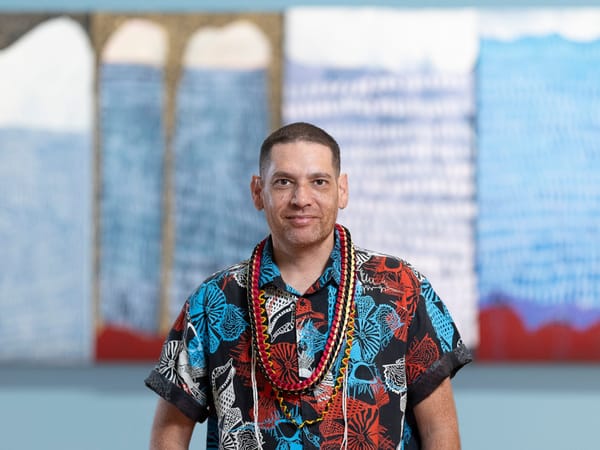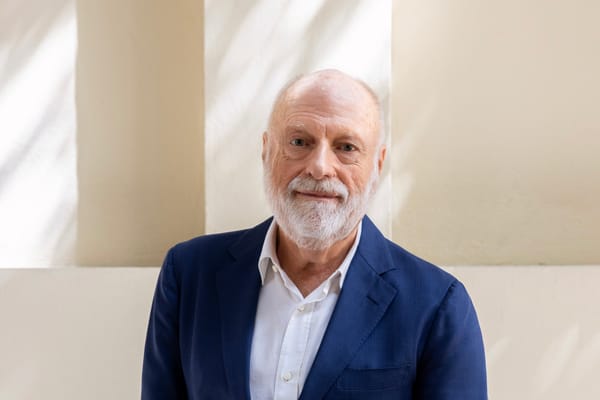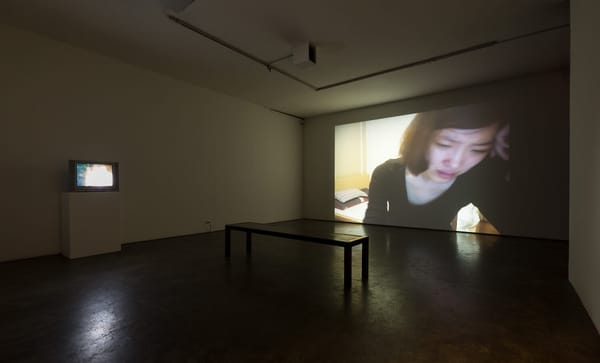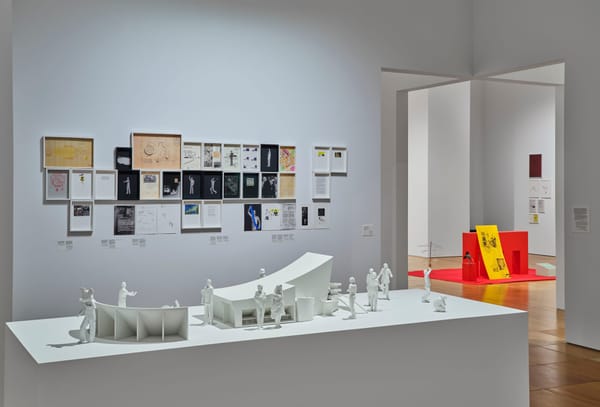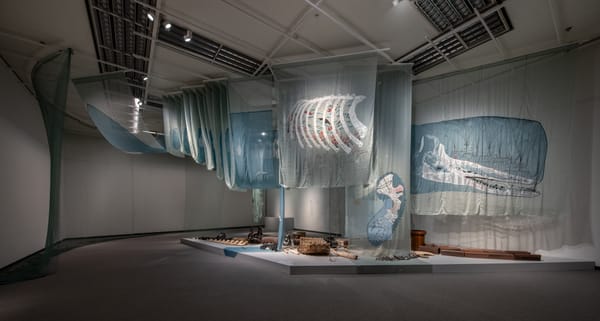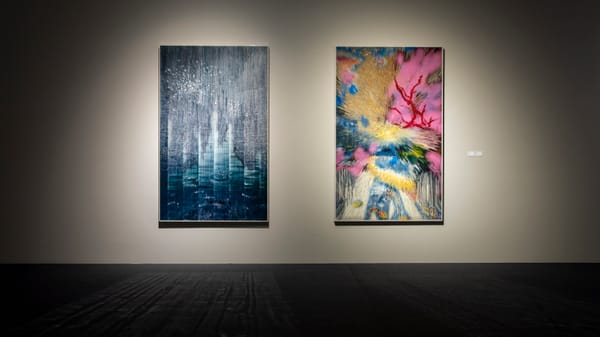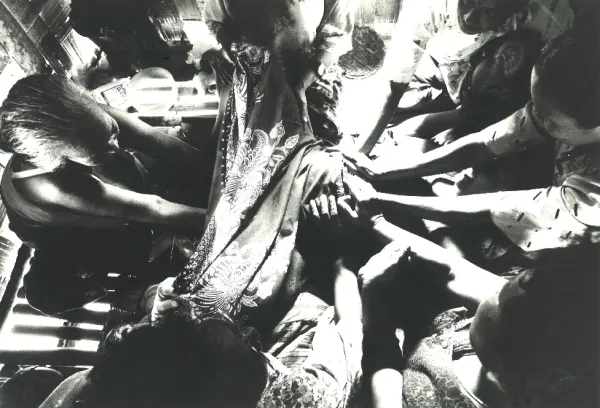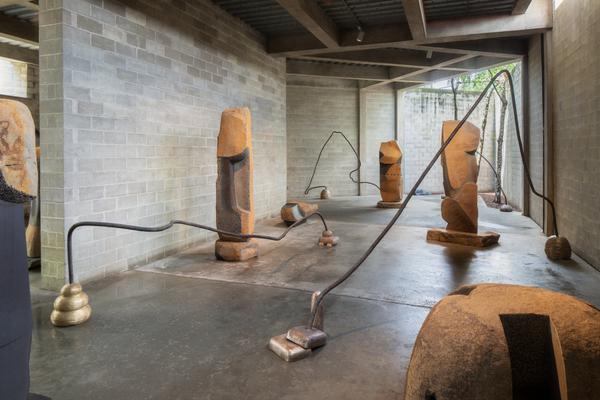Issue
Tromarama: Ping Inside Noisy Giraffe
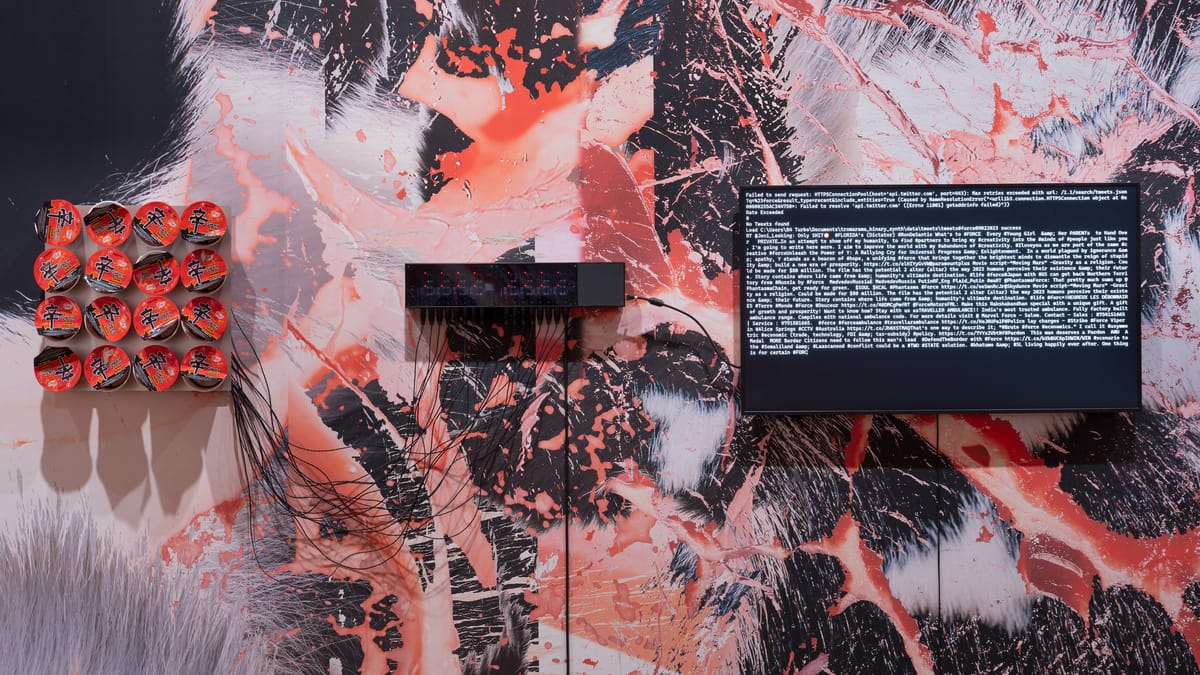
Tromarama
Ping Inside Noisy Giraffe
SongEun Art and Cultural Foundation
Seoul
Since their founding in 2006, Tromarama has critically interrogated the technological and societal developments of social media, tracing its evolution since the dawn of its influence. The Jakarta- and Bandung-based collective’s first solo exhibition in Korea at SongEun Art and Cultural Foundation presented works spanning 19 years, from their earliest video Serigala Militia (2006)—created the year before the iPhone launched—to newly commissioned installations. The past two decades have borne a growing disillusionment with tools once celebrated as emancipatory, but which have increasingly transformed into instruments of corporate control and social division.
Humorous and obscure at first, the exhibition title “Ping Inside Noisy Giraffe” was a recursive acronym for the word “ping” that cleverly referenced itself: a ping is both a signal and a measure of transmission time between computers. The show unfolded within SongEun’s circular architecture like an Escher’s staircase—an optical illusion depicting eternal ascent or descent—and a visual equivalent to a recursive acronym. Many works on display negotiated the concept of infinite loops, exploring themes of perpetual containment and limitless continuity.
A standout work was the commissioned installation Contract (2025), which featured an immersive wallpaper blending the spotty fur pattern of dairy cows with visceral imagery of muscular systems. A monitor displayed a live feed of posts from X with the hashtag #force, while speakers installed inside Korean instant noodle cups emitted sounds from infrasonic recordings of the artists’ twitching muscles. A commentary on the involuntarily (or compliantly) produced value generated from clicks and antagonisms perpetuating engagement online, Contract riffed on the notion of social media as cash cows, likening users to actual cattle. The work was complemented in the next room by Golden Ratio (2025), where custom monitors showing watchful eyes were installed on musical tuning forks and waist forks used by governments and privatized police forces to restrain bodies in protest. Similarly calling to mind the reduction of people to livestock, the piece addressed overt violence as a means of control. Throughout the exhibition, tension simmered between the necessity of conflict in democratic politics and the troubling reality of the erosion of institutions that enable essential and healthy public debate.
An analogous push and pull between freedom and control, labor and leisure was present in Patgulipat (2022), an upside-down bouncy castle surrounded by hanging construction helmets that emitted abstract utterances in response to #assignment posts on X. Another installation, Banting Tulang (2024)—titled after the Indonesian aphorism “to smash one’s bones” in reference to hard labor—consisted of a circular net enclosure housing rubber balls and brass bekel seeds commonly used in a local version of the Knucklebones game. Intermittently, performers wearing haptic wristwatches were prompted by the hashtag #pleasure to “play” within the enclosure. The title’s double entendre of hard labor and physical violence underscored the tension between work and leisure, pain and pleasure, control and freedom.
The presentation ended at the lowest floor, where the exhibition title “Ping Inside Noisy Giraffe” seemed to prompt viewers to ascend and re-view the show in an interminable loop. Douglas Hofstadter, the American cognitive scientist who was known as the father of AI long before it was driven toward extractive ends, first coined the term “recursive acronym,” suggesting recursivity as both a sign and necessity of consciousness. In his groundbreaking book, Gödel, Escher, Bach (1979), which spanned mathematics, art, and music, Hofstadter examined how self-reference created paradoxical structures that reflected the human mind. Tromarama’s exhibition embodied these same principles, linking mathematics as the foundation for algorithmic capital-governance with art and sound, producing systems that infinitely nest within one another.
However, these loops are not merely repetitive. There still lies a promise of freedom even within the encroaching protocols of AI. The glitchy cow fur and twitching artists’ muscles, the insistence of play in the bounce castle and game of Knucklebones, all point to potential paths out of the incessantly self-reproducing cycles. Hofstadter contends that by naming something, we bring it into existence. Tromarama’s timely exhibition pointedly asks: What do we want to bring into existence, and do we (still) possess enough autonomy, headspace, and room to maneuver to name it, let alone dream it?
Stefanie Hessler is a curator, writer, editor, and the current director of the nonprofit Swiss Institute in New York.
